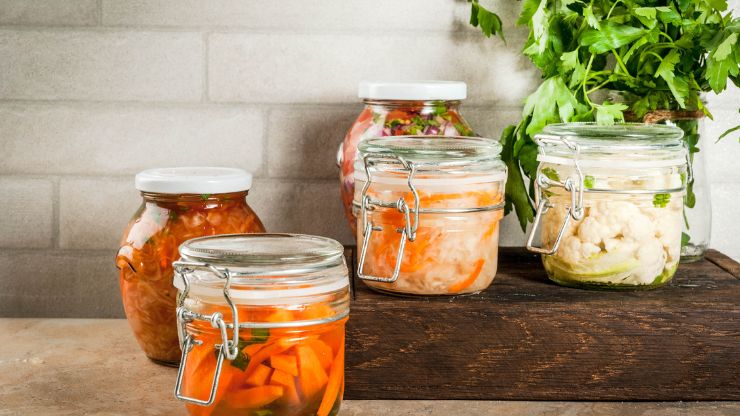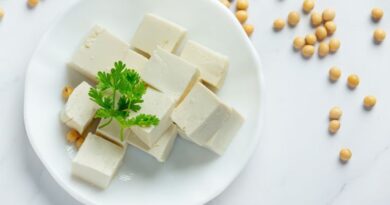Embark on a culinary journey as we explore the art of crafting your very own Make Fermented Salsa. In a world where taste meets health, fermented salsa emerges as a tantalizing creation. This culinary adventure combines the freshness of tomatoes, onions, peppers, and garlic with the transformative magic of fermentation. As the popularity of fermented foods surges, discover the unique flavors and myriad health benefits hidden within each tangy spoonful.
This guide takes you step-by-step through the process, from choosing the finest ingredients to monitoring the fermentation, resulting in a probiotic-rich salsa that not only elevates your taste experience but also contributes to a healthier you. Get ready to delve into the delicious world of homemade fermented salsa, where every bite is a celebration of flavor and well-being.
Brief Overview of Fermented Salsa
Fermented salsa is not your average dip. It’s a vibrant mix of fresh vegetables, carefully selected spices, and the magic touch of fermentation. The process of fermentation not only enhances the flavor but also introduces a host of health benefits.
Step-by-Step Guide

Preparing the Vegetables
Chop fresh tomatoes, onions, peppers, and garlic into uniform pieces. Consistent sizing ensures even fermentation, creating a balanced taste in your salsa. The goal is to have a mix of textures, so take care in preparing each ingredient. This step lays the foundation for a delicious and well-rounded fermented salsa.
Read Also: 8 Simple Recipes That Make Homemade Desserts Easy and Fun
Ingredients:
- Fresh Tomatoes: Start with ripe, juicy tomatoes for the base of your salsa. Choose a variety that suits your taste preferences, whether it be the sweetness of cherry tomatoes or the robust flavor of Roma tomatoes.
- Peppers: Add a mix of peppers for complexity. Jalapeños bring heat, while bell peppers contribute sweetness. Experiment with different varieties to find the perfect balance for your palate.
- Onions and Garlic: These aromatic ingredients provide depth and savory notes to your salsa. Red onions add color, while garlic infuses a rich flavor.
- Cilantro: Fresh cilantro adds a burst of freshness to your salsa. Include both leaves and stems for a more robust flavor.
- Lime Juice: The acidity of lime juice not only enhances flavor but also plays a crucial role in the fermentation process.
- Salt: Choose a high-quality, non-iodized salt, such as sea salt or kosher salt. Avoid table salt, as additives may hinder fermentation.
Equipment:
- Glass Jars: Opt for glass jars with tight-fitting lids. Avoid metal containers, as the acid produced during fermentation can react with metal.
- Fermentation Weights: Keep your ingredients submerged in the brine with fermentation weights or small glass jars that fit inside the larger container.
- Cheesecloth or Coffee Filter: Use these to cover the jars, allowing gases to escape while preventing contaminants from entering.
The Fermentation Process:

- Chop and Mix: Start by chopping your tomatoes, peppers, onions, and garlic to your desired consistency. Combine them in a large mixing bowl along with the cilantro.
- Create the Brine: In a separate bowl, mix water and salt to create a brine. Use approximately 1 to 2 tablespoons of salt per quart of water. Stir until the salt is fully dissolved.
- Pack the Jars: Pack the chopped ingredients tightly into the glass jars, leaving some space at the top. Pour the brine over the vegetables, ensuring they are fully submerged.
- Weight and Cover: Place fermentation weights or small glass jars inside the larger jars to keep the ingredients submerged. Cover the jars with cheesecloth or a coffee filter and secure with a rubber band or string.
- Fermentation Time: Allow the salsa to ferment at room temperature for 3-7 days, depending on your desired level of tanginess. Taste it daily to monitor the flavor.
- Store and Enjoy: Once fermented to your liking, remove the weights and cover the jars with airtight lids. Refrigerate the salsa to slow down the fermentation process. Enjoy the unique flavor and probiotic benefits!
Tips for Success:
- Cleanliness is Key: Ensure all equipment is thoroughly cleaned to prevent unwanted bacteria from interfering with the fermentation process.
- Experiment with Ingredients: Feel free to customize your salsa with additional ingredients like mango, pineapple, or different herbs to create unique flavor profiles.
- Temperature Matters: Warmer temperatures speed up fermentation, while cooler temperatures slow it down. Find a balance that suits your preference.
- Burp the Jars: Gases produced during fermentation can cause pressure to build up. “Burp” the jars daily by slightly loosening the lids to release excess gas.
Health Considerations

Probiotic Content
Thanks to fermentation, your salsa becomes a probiotic powerhouse. Beneficial bacteria multiply during the process, promoting a healthy gut microbiome. Probiotics support digestion and contribute to overall well-being. Enjoy the flavorful benefits of probiotic-rich fermented salsa as part of a nutritious and delicious addition to your meals.
Read Also: 7 Crowd-Pleasing Potato Recipes
Digestive Benefits
The enzymes produced during fermentation offer digestive perks. They aid in breaking down food, promoting easier nutrient absorption. Say goodbye to digestive discomfort as you indulge in fermented salsa. This flavorful creation not only tantalizes your taste buds but also supports a smoother and more efficient digestive process, contributing to overall digestive well-being.
Potential Allergens
While fermented salsa is generally safe, it’s essential to be mindful of potential allergens. Individuals with specific allergies should exercise caution, carefully checking ingredients. Ensure all components used in your salsa are safe for consumption. If you have concerns or allergies, consult with a healthcare professional before indulging in this delightful creation to ensure a safe and enjoyable culinary experience.
Conclusion
In conclusion, crafting your own fermented salsa is a rewarding journey that unlocks new dimensions of flavor and nutritional benefits. Experiment with ingredients, embrace the transformative power of fermentation, and savor the delicious results. Elevate your culinary creations with a homemade salsa that goes beyond the ordinary.
FAQ
The fermentation time can vary but generally ranges from a few days to a week. Monitor the signs of fermentation to determine when your salsa is ready.
While fresh, locally sourced tomatoes are ideal, store-bought tomatoes can be used. Just ensure they are of high quality and free from any additives.
When done properly, fermentation is a safe process. However, contamination can occur if hygiene practices are not followed. Maintain cleanliness throughout the process to mitigate risks.
Absolutely! Some people prefer wild fermentation, allowing the natural bacteria in the environment to initiate the process. However, this method requires careful monitoring.







